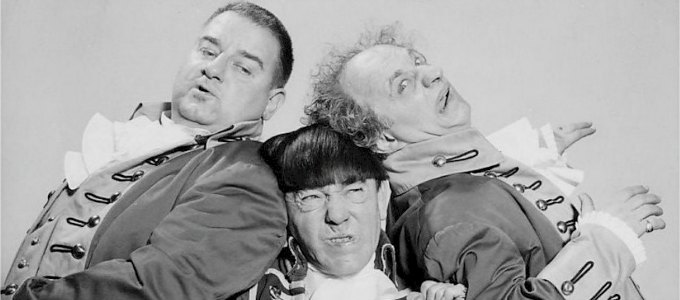
Improvisation concepts extend outside of the theater into the workplace, says author Kelly Leonard.
by Lauren Dixon
November 17, 2015
You present an idea in a meeting that is immediately shot down. It happens to everyone.
However, through the use of improvisation, both people and organizations can change their attitude around new ideas, says Kelly Leonard of The Second City, the famed Chicago comedy theatre that has produced some of the world’s most famous comedians.
Leonard has written a book about the business benefits of improvisation. Along with co-author Tom Yorton, “Yes, And” addresses concepts of improvisation that can help foster creativity and collaboration at work.

Leonard, CEO and president of Kelly Leonard Productions and chief creative adviser of The Second City, talked with Talent Management about how “Yes, And” works in the office. Edited excerpts follow.
What is ‘Yes, And’?
‘Yes, And’ is sort of ground zero for improvisation. The idea is this: What we do at Second City is we make something out of nothing. In improvisation, actors are onstage together — let’s say six actors — and they get a suggestion from the audience, and they have to just make it up. That’s not easy.
And if you just sort of think about that though, that’s what everyone in life is doing. No one is handed a script: ‘This is how you’re supposed to talk.’ ‘This is how you’re supposed to act.’ In business, in particular for creative businesses, they have to make something out of nothing every day.
What we have discovered when we train our people to get good at doing this job, the first thing they have to learn is if they’re going to make something out of nothing with a group of people, the surest way to make sure that that thing that you create won’t work, that it won’t be funny, that it won’t be powerful, is if you spend your time saying, ‘no.’
How can businesses practice this concept?
Well, the first thing is that the leaders have to practice it at the top. So if it’s in brainstorming sessions, if it’s in companywide meetings or Q&As, if it’s in one-on-one interactions with subordinates, the idea is essential from top down because that’s where it starts. If you’re the boss, and you just want to live in ‘no,’ you are not tapping the greatest amount of creativity from your people.
How can the ideas the phrase ‘yes, and’ fosters turn into actual products?
There’s a great phrase that Rick Thomas, who was a teacher at Second City for many years, has, which is ‘fall into the crack in the game.’ And the idea with ‘fall into the crack in the game’ is that a mistake is going to happen on stage ’cause it just happens.
Let’s say that I’m in a scene with someone, and I identify myself as Bruce, but he calls me Kevin. And the audience knows he’s made a mistake. He’s the only one who doesn’t know he’s made a mistake. I can either call out the mistake and make him look dumb and the scene ends, or I can take the mistake as an opportunity and say something like, ‘How’d you know my secret identity?’
And then everything changes because first of all, the audience loves it because I’ve saved my scene partner on stage from looking dumb. But also, it’s just added a whole new element to the scene that didn’t exist before. And you go fly in that direction, and you might find some really good stuff. The same works in business.
When can ‘yes, and’ go wrong?
Well, ‘yes, and’ can be manipulated. We were with a tech group yesterday who had been receiving some executive coaching, and they were noting that the head of this coaching group would say, ‘Yeah, you want to get buy-in from the team, so I’m going to go around and get everyone’s input.’
But what this person did was went around, got everyone’s input until he found the person that he agreed with and said, ‘Yep, that’s the one. Let’s do it that way.’ Which is not buy-in at all. It’s fake buy-in. It’s fake ‘yes, and.’ And that can be very hurtful because what that really is is more of ‘yes, but.’
In the book, you list the other six elements of improvisation. What are they?
So we talk about ‘ensemble,’ as opposed to ‘team,’ and the idea there is that at Second City, we have ‘ensembles,’ which imply sort of cooperative behavior, whereas ‘teams’ we find implies competition.
We all know the phrase, ‘You’re only as good as your weakest member.’ It’s a well-worn phrase. We at Second City changed it a little bit, and we say, ‘an ensemble is only as good as its ability to compensate for its weakest member.’ And what that does is it puts the onus back on the ensemble, rather than the individual.
We also talk about co-creation because at Second City, we create our content interactively, and that’s becoming something that the world is in on with the development of the Internet.
We talk about change and how comedy itself is something that can make the process of change easier. We get brought in to a lot of companies who are going through mergers and culture changes. And the worst thing that can happen when the big change is going on is that people ignore the elephant in the room.
Failure is a huge part of everything. And in improvisation, we acknowledge that we’re going to fail a lot, so we set up structures to use failure as part of the process rather than make it anathema.
Leadership is a big part of our work here, and there’s a chapter called ‘Follow the Follower.’ ‘Follow the Follower’ is an improv concept, where a person who is leading a scene transfers leadership to another person inside the ensemble without words.
Finally, we talk about listening. Our premise is this: In general, most human beings are bad listeners. It’s not their fault. It’s just that it’s not practiced. So we recognize that it’s important to go to a gym to workout your muscles to keep in shape. It doesn’t make any sense to think that you wouldn’t need to do the same for, say, your listening skills.




